For education orders please call 1-877-290-8256.
Welcome again to our monthly newsletter with features on exciting celestial and earth science events, product reviews, tips & tricks, and a monthly sky calendar. We hope you enjoy it!

Backyard Astronomy—on Your iPad
Simulation Curriculum, developers of award-winning Starry Night and The Layered Earth, is pleased to announce a new line of multimedia books and textbooks for Apple's iPad. Each digital publication is enhanced with engaging material including video, audio, image galleries, 3D animations and quizzes.
Here are some sample pages from our upcoming first iBook, Backyard Astronomy: An Introduction to Stargazing:
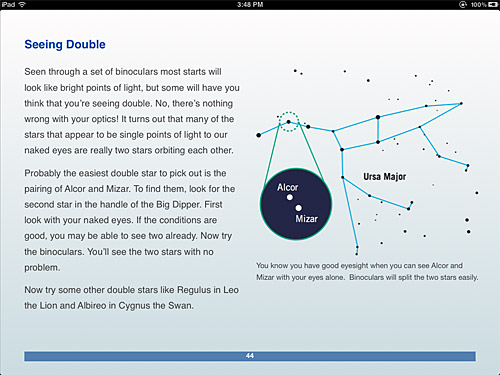
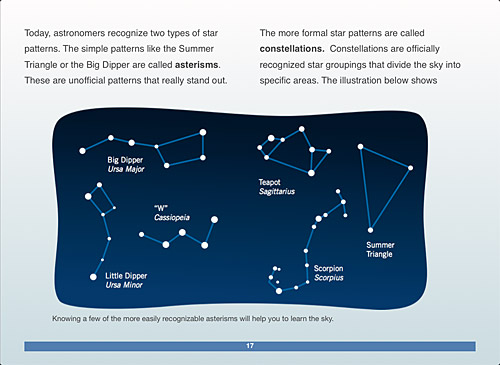
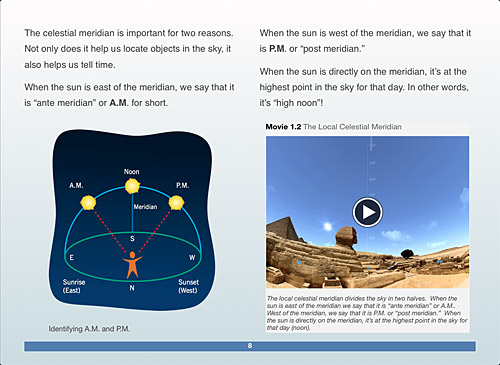
You'll learn all about "star hopping", how to tell a planet from a star, the phases of the Moon and along the way you’ll also get tips on how to use binoculars and telescopes and much more. With this amazing interactive book as your guide, you’ll be exploring the sky in no time!
Look for Backyard Astronomy: An Introduction to Stargazing on your iPad™'s iBooks™ store in the next few weeks
[Top of Page]

On March 20, 2012 at 5:14 UT spring begins in the northern hemisphere and autumn in the southern hemisphere.
But, why at that particular time? For northern observers, spring officially begins when the Sun, in its journey along the ecliptic, crosses the celestial equator from south to north. At that moment, the Sun is directly overhead at the equator and both northern and southern hemispheres get an approximately equal (equi) number of night (nox) and daylight hours.

Because of the Earth's tilt, the celestial equator and the ecliptic are inclined to each other at 23.5 degrees. These two great circles intersect at two points -- the two equinoxes. Only when the Sun is at either equinox will it rise due east and set due west.

The above illustrations show sunrise and sunset as seen from the latitude of New York on the first day of spring. Notice the angle the celestial equator makes with the horizon. Now compare this with the views as seen from the equator and the North Pole.

At the equator the Sun rises vertically and is directly overhead at local noon but at the North Pole the Sun, having just risen, simply moves along the horizon and will not set for about another six months.
In the above discussion, we have treated the Sun as a simple stationary point and ignored the atmosphere. When the apparent size of the Sun's disk, its motion and atmospheric refraction are taken into account, the day is actually longer than the night at equinox and sunrise at the north pole occurs earlier.
Of course, similar events occur at the other equinox around September 23. Spring begins in the southern hemisphere, autumn in the northern hemisphere and the North Pole sees the beginning of a long night.
All illustrations were made with Starry Night and can easily be verified using any version of the software.
Further Study
How is the maximum altitude reached by the Sun at equinox related to the latitude of the observer?
Answers to last month's questions:
- Question 1: In the article we discussed Type II supernovae. What is a Type I supernova?
Answer: Type I supernovae originate in a binary system where one component is a white dwarf which accretes matter from its companion and eventually becomes unstable.
- Question 2: What would be the expected life span of a very low mass star?
Answer: Depending on its mass, such a star could live longer than the present age of the universe.
Herb Koller
[Top of Page]

1 Light Second
A distance sphere showing how far light travels in one second (299,792,458 meters).
Pedro Braganca
Education & Content Director
Starry Night® Education
[Top of Page]

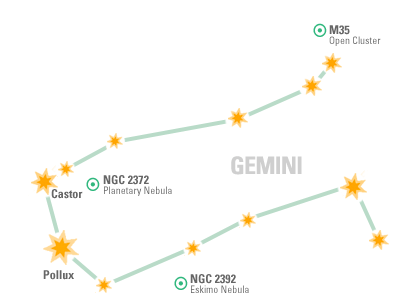
Gemini is well placed for observations at this time of year, floating high overhead in the south-east by late evening.
Castor is an easy, pretty double which resolves nicely in small scopes. A true double, the stars revolve around each other every 510 years.
Close by is NGC 2372, a faint planetary nebula that looks like a mini-dumbbell.
The Eskimo Nebula (NGC 2392), photographed so magnificently by the Hubble Space Telescope, is also known the Clown Face Nebula. Only large scopes bring out the details you would associate with a face but, nonetheless, it's a fun target.
M35 (NGC 2168) is a lovely open cluster by Gemini's left foot, with a smaller, dimmer but rich companion cluster NGC 2158; physically unrelated, they just happen to lie along the same line of sight.
Sean O'Dwyer
Starry Night® Times Editor
[Top of Page]
|
 |
 |
 |
4-pack DVD Set
$19.95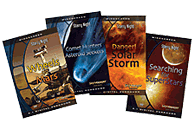
Ends March 31, 2012
COUPON CODE
4packmar12

|
 |
 |
 |
 |
 |
 |
 |
Finding the Big Dipper
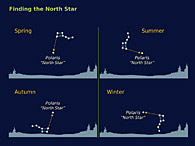
To locate the Big Dipper, face north and look for the seven bright stars that dominate the sky in this direction—they should be easy to find.
Depending on the time of year, the pattern formed by these stars appears in a difference orientation, but the shape is always the same:
• In autumn, the dipper appears to be sitting flat.
• In spring, the dipper is upside-down, spilling its contents.
• In summer, it sits upright on its bowl.
• In winter, it sits up on its handle.
|
 |
 |
Pedro Braganca
Education & Content Director
Starry Night® Education
|
 |
 |
 |
 |
 |
 |
 |
Graphing Elongations
You can automatically graph the elongation of a planet’s moons, by choosing Graph Elongation Of Moons from the planet’s contextual menu.
Pedro Braganca
Education & Content Director
Starry Night® Education
|
 |
 |
 |
 |
 |
 |
 |
Follow us at
• twitter.com/starrynightedu
|
 |
 |
 |
 |
 |
 |
 |
Moon Phases
 First Quarter: First Quarter:
March 1st
01:21 UT
 Full Moon: Full Moon:
March 8
09:39 UT
 Last Quarter: Last Quarter:
March 15
01:25 UT
 New Moon: New Moon:
March 22
14:37 UT
 First Quarter: First Quarter:
March 30
19:41 UT
Observing Highlights
For most of the month of March, the four brightest planets—Venus, Mars, Jupiter, and Saturn—will all be above the horizon around 9 p.m.
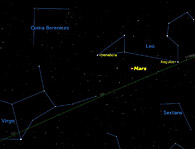
Sat., Mar. 3
3:00 p.m. EST
Mars at opposition
Mars will be directly opposite the Sun in the sky. It rises at sunset and sets at sunrise, visible the whole night. Because of Mars’ elliptical orbit, it will not actually be closest to Earth until nearly two days later.
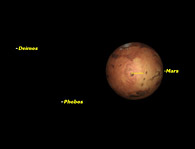
Mon., Mar. 5
Noon EST
Mars closest to Earth
Mars will be 0.674 astronomical units (100,780,754 kilometers) from Earth. This is a very unfavorable apparition of Mars, Mars being about as far from Earth as is possible, close to aphelion.
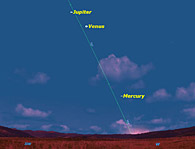
Sat., Mar. 10–Sat. Mar. 24
Evening Zodiacal Light
The dim glow of the zodiacal light, caused by sunlight illuminating interplanetary dust, can be seen in the western sky after the end of evening twilight. Tue, Mar. 6, evening twilight Mercury at greatest elongation east Mercury will be at its best in the evening sky for the year 2012 for observers in the northern hemisphere. Jupiter and Venus ride high above it.
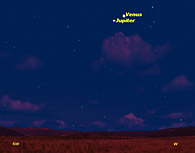
Tue., Mar. 13
Evening twilight
Jupiter and Venus The two brightest planets will be only 3 degrees apart this evening.
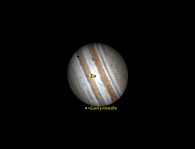
Thu., Mar. 22
Early evening
Double satellite transit on Jupiter
In eastern North America, observers will see two of Jupiter’s moons cross Jupiter’s disk. Further west, observers will see the two moons’ shadows repeat the transit.
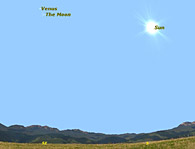
Mon, Mar. 26
2 p.m. EDT
Venus in daylight
Venus is often visible in daylight if you know exactly where to look. Today the waxing crescent Moon will be your guide: Venus will be visible just above the Moon. Venus is just a few hours shy of being at its greatest elongation from the Sun in our sky.
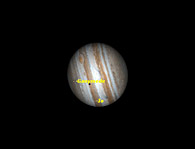
Thu., Mar. 29
Early evening
Double satellite transit on Jupiter
Observers in western North America will see two of Jupiter’s moons cross the planet’s face, followed by Io’s shadow and the Great Red Spot.
Planets
Mercury will be well placed as an evening “star” during the first half of March, being at greatest elongation east on Mar. 5. This is the most favorable evening apparition of 2012.
Venus is a brilliant object in the evening sky after sunset all month, and is at greatest elongation east on Mar. 27. The waxing crescent Moon will pass close to Venus on Mon. Mar. 26, making it an easy target in the daytime sky.
Mars is in Leo all month, reaching its maximum size for this apparition of 14 arc seconds. By the end of the month it will already have faded from its maximum of magnitude –1.2 to magnitude –0.7. Mars rises around sunset and sets around sunrise.
Jupiter continues to shine brightly in the western sky all month in Aries, setting around 11 p.m. Jupiter and Venus are the brightest objects in the evening sky other than the Moon.
Saturn rises around 10 p.m., and is visible the rest of the night. It now shines brighter than nearby Spica.
Uranus is too close to the Sun to observe, being in conjunction with the Sun on Mar. 24.
Neptune is too close to the Sun to observe.
Geoff Gaherty
Data for this calendar have been derived from a number of sources including the Observer's Handbook 2012 of the Royal Astronomical Society of Canada, Starry Night® software, and others. Only events with a reasonable possibility for Northern Hemisphere observers, or those events with some other significance, are given. All times shown are U.S. Eastern Time.
|
 |
 |
 |
 |
 |
 |
 |
NSTA - National Conference
Booth #747
March 29 - April 1, 2012
Indianapolis, IN
|
 |
 |
 |
 |
 |
 |
 |
Educational Inquiries and Sales
Please contact us for all education inquiries. EDUCATION ORDERS 1-877-290-8256
|
 |
 |
 |
 |
 |
 |
 |
Send us your feedback
Do you have a question, comment, suggestion or article idea to pass along to Starry Night® Times?
Click here to get in touch with us.
|
 |
 |
 |
 |
 |
 |
 |
Starry Night® is the world's leading line of educational astronomy software and DVDs. Visit store.starrynight.com to see all the great products we offer for everyone from novice to experienced astronomers.
You have received this e-mail as a user of Starry Night® or as a registrant at starrynighteducation.com.
To subscribe sign up here.
Starry Night® is a division of Simulation Curriculum Corp.
Simulation Curriculum Corp.
Starry Night® Education
11900 Wayzata Blvd.
Suite 126
Minnetonka, MN 55305
Tel:
1-866-688-4175
|
 |
 |
|



 EDUCATION ORDERS 1-877-290-8256
EDUCATION ORDERS 1-877-290-8256















